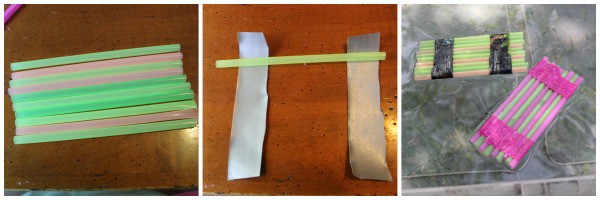- Something for each participant to stand on plus one extra - I've used foam squares, put X's on the floor with tape, etc.
How To Play
The participants stand in a semi-circle with one marker on the ground that each participant stands on. Put the extra marker in the middle (you do not need an equal number of participants). All participants should face in-wards toward the empty marker. The object of the game is to get the two sides to pass each other, ultimately switching sides by moving strategically from one marker to another.
The participants stand in a semi-circle with one marker on the ground that each participant stands on. Put the extra marker in the middle (you do not need an equal number of participants). All participants should face in-wards toward the empty marker. The object of the game is to get the two sides to pass each other, ultimately switching sides by moving strategically from one marker to another.
Rules
- Only one person can be on a marker at a time
- Participants can only move to an empty marker
- Participants can only move forward - if the group gets struck, everyone has to start over
- Participants can skip one person going the opposite direction, but s/he cannot skip someone going the same direction (to walk around the other person, the participant can step off the marker and walk around the person to step on the empty marker)
Variations
- When the group gets stuck and has to start over, have the participant at the front marker move to the last marker so there is a new person leading every time
- Have the group do it without talking. Be strict about it, and when they start to get frustrated, allow them to talk. Process the differences after the activity
- Once the group gets it the first time, have them do it while holding their breath. If someone breathes (exhales or inhales) in the middle, make them start over. This takes precise knowledge and planning. After, process the difference between just doing what you are told and knowing your place/role.
- Try the activity with two lines in a "plus sign" formation with one empty spot in the middle
·
This activity works even if you have odd
numbers. First move a person forward into the empty space. Then the first
person from team 2 goes around to the empty space, and the second person from
team 2 steps forward. This pattern continues (team 1 moves one person, team 2
moves two people, team 1 moves three people, team 2 moves four people, etc.)
until all people are moved. After all have moved, the pattern is reversed: five
people move four, three, two, one.
·
Hint: There are three “unspoken rules” that if
followed, will solve this puzzle. First, at every juncture, there are only two
possible moves: one will get them stuck and the other will not. Second,
participants from opposing team should always be alternating on the spaces. If
one team has two in a row, they have created a traffic jam. Third, for the
first half of the game, when they arrive at a juncture, always move the person
that is positioned closer to the outward tails of the semi-circle, not the person
closer to the center. After all participants have moved, the pattern is
reversed.
Lessons Learned
Process with the group throughout - talk them thru their frustration, ask how their current solution is working, help them listen to each other if they are struggling to do so, etc.
Problem Solving: At the beginning of the activity, participants often say this activity is impossible, but by the end, they feel great! When the group makes unanimous decisions, they usually make fewer mistakes. Some problems get solved much faster if you focus on the process or how you are interacting, rather than focusing on the problem.
- How did it feel to accomplish an “impossible” task?
- Would you be given a task if there was not a way provided to accomplish it?
- What steps were taken to get the activity done?
·
Communication:
- Whose ideas were important? (every suggestion)
·
Teamwork:
- How many people did it take to do this activity?
- How difficult would it be to accomplish this task if someone was not cooperating or doing their part?
·
Frustration
Enduring
Enduring
- What was more rewarding, the fact that everyone is standing in a different place or the process that brought you there? How does that relate to your life and other projects you are involved in?
Picture Credit:
First picture: http://www.playmeo.com/uploads/89ac3ca9270f995412eccd8c13c609bd.png
Second picture: http://eaglepointresort.com.ph/wp-content/uploads/2014/08/team-building-project-adventure-w18368-traffic-jam-4.jpg
First picture: http://www.playmeo.com/uploads/89ac3ca9270f995412eccd8c13c609bd.png
Second picture: http://eaglepointresort.com.ph/wp-content/uploads/2014/08/team-building-project-adventure-w18368-traffic-jam-4.jpg











